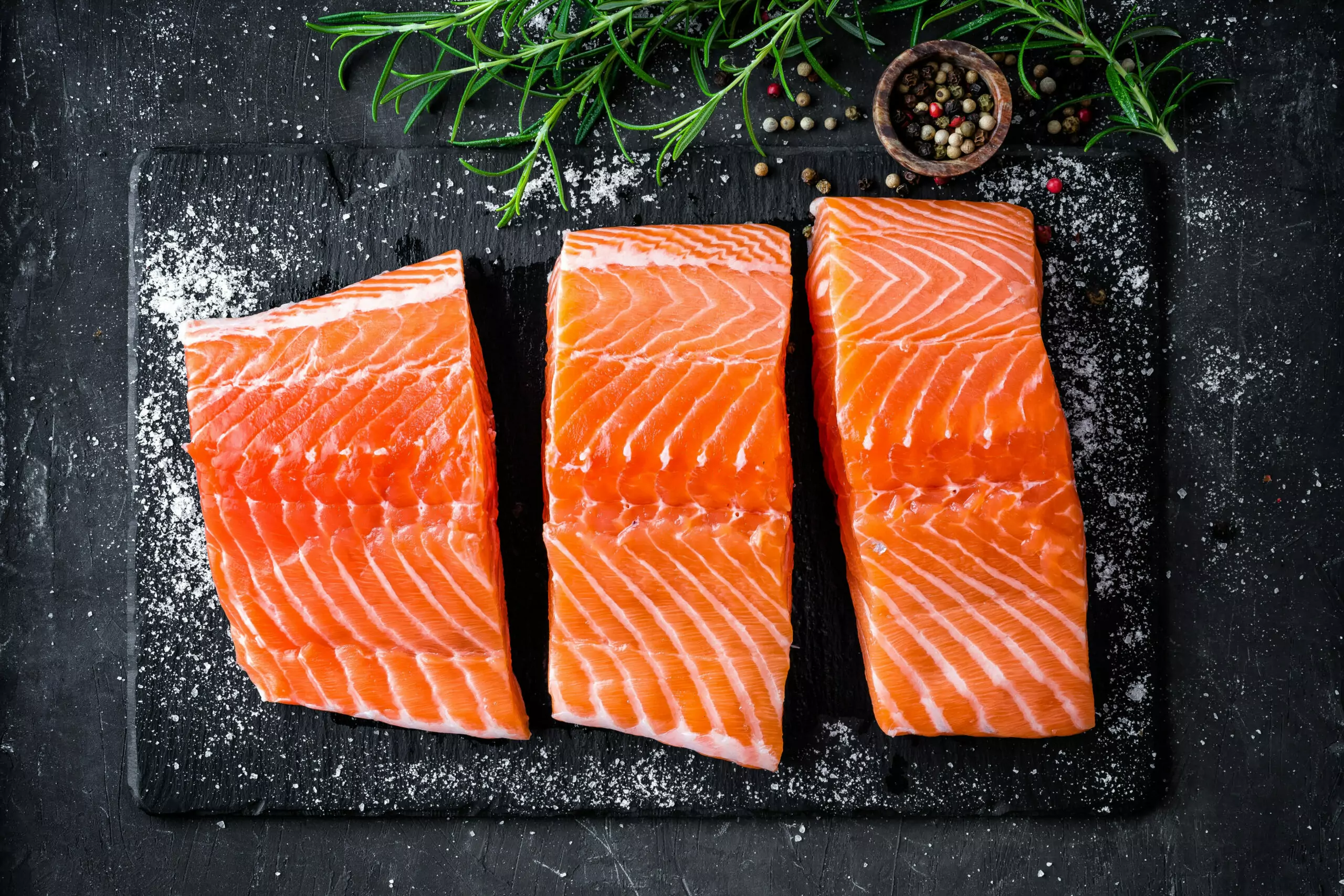With its rich nutrient content and ease and versatility of preparation, salmon is arguably the most popular seafood in America. Though it has a rich flavor, it is not particularly ‘fishy’. This makes the fish enjoyable even for people who do like other seafood.
According to various sources, there are eight to nine species of salmon. The majority of these salmon species are found in North American waters, specifically off the coast of Alaska, California, Oregon, Washington, and British Columbia in Canada. Two species, namely the Masu salmon and Amago species, are mainly found off the coast of Japan.

In this guide, we will go through these different Pacific Salmon species that are commonly supplied by salmon fish distributors to the market, so that the next time you buy wild salmon, you know exactly what you’re getting.
- Chinook/King Salmon.
The largest of the salmon species found in the Pacific Ocean, king salmon is given its name for a reason. They have an average weight of 20 pounds, and the biggest ones have been known to weigh as heavy as 100 pounds. When it comes to taste, they arguably have the best flavor and their meat is characterized by a high content of richly marbled fat giving it a silky texture that melts in the mouth. Their harvest season generally begins in May and continues till August, but frozen king salmon is available year-round.
- Sockeye/Red Salmon
Easily distinguishable by its red color, sockeye has a firm meat texture that is less fat than king salmon and has a slightly richer taste. This makes it the favorite of many chefs. They weigh around six pounds on average. Sockeye harvest season runs from May and continues till September. Wholesale salmon meat of sockeye is available frozen or canned year-round.
- Coho/Silver Salmon
With a fat content less than king salmon and redeye, silver salmon has a relatively mild flavor. They weigh around eight pounds on average and their harvest season begins in late summer and continues till the end of November.
- Keta salmon
Also known as chum salmon, silverbrite, or dog salmon, keta salmon has a firm meat texture with a low fat content and mild flavor. This makes the fish a good option for drying and smoking. Keta salmon is not as popular as other salmon species and sometimes gets a bad reputation because of its meat quality. But this perception often belies the quality of chum salmon, a lot of which are very high in quality. Caught mainly in the waters of Alaska and the Yukon River, their harvest season begins in June and continues until September.
- Pink Salmon
The most abundant and smallest of the Pacific salmon species, the pink salmon weighs on average two to three pounds. Due to its plentiful availability, it is sometimes considered to be at the bottom rung of salmon meat. But this is not really accurate as pink salmon has one of the most tender meat textures and delicate flavors.
Conclusion
Apart from having one of the best tastes among seafood, salmon can be prepared in a wide variety of ways. This makes it a versatile fish that can be turned into a mouthwatering dish even for people with little cooking skills. Salmon is also very rich in healthy nutrients including omega-3 fatty acids which are associated with many positive health outcomes such as cardiovascular health, higher cognitive performance, and improvements in mood. Read more about omega-3 benefits here.
If you’re looking to source high-quality wholesale salmon, Pucci Foods is a premier supplier of wild salmon. Reach out to us and get access to quality salmon meat year-round.



